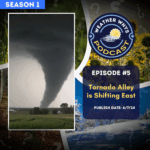
Is Tornado Alley shifting east? In this episode of Weather Whys, we delve into the shifting patterns of tornado activity in the United States. We thought this episode would be especially relevant with the traditional peak of tornado season upon us.
Tornado Alley has traditionally meant the Great Plains, but tornadoes are becoming more frequent in the Southeast US, moving towards more densely populated areas and starting earlier in the year. This episode discusses research findings on this eastward shift, links to climate change, the increased risk of damage in urban centers like Memphis and Nashville, and why this all matters.
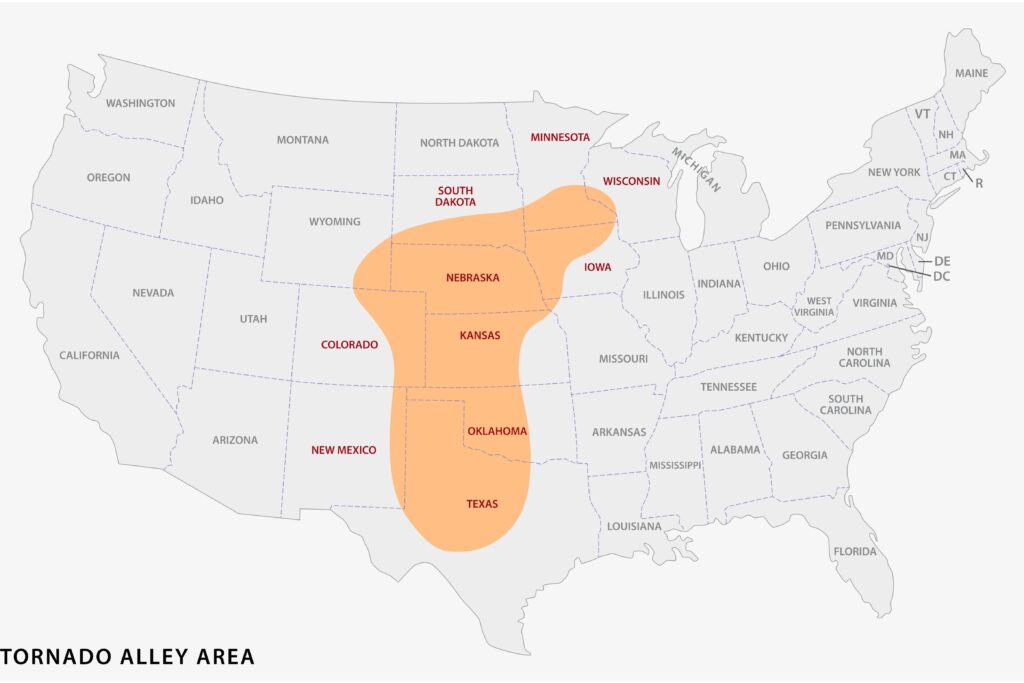
This episode is a short one but on an important topic!
[00:00:24] Thanks for joining us. So what is Tornado Alley? The term traditionally refers to an area roughly from South Dakota southward to north central Texas. However, tornadoes are becoming more frequent to the east and north.
[00:00:36] Scientists documented this eastward shift. A 2018 study found that tornado frequency generally decreased over The past four decades across Tornado Alley, while increasing to the east across the Lower Great Lakes, and into the Deep South.
[00:00:49] Northern Illinois University researchers found that supercells, the origin of most tornadoes, will become less frequent across Tornado Alley, and more frequent across the eastern U. S. as the planet warms.
[00:00:59] Others have noted the frequency of tornado outbreaks have shifted dramatically eastward since 1950, and they increasingly occur in clusters, or multiple tornadoes in the same area. Research also suggests tornadoes are now more common in the late winter and early spring, and less common in the late summer and early fall.
[00:01:17] The biggest consequence is a significant increase in damage risk. While people live in Tornado Alley, it’s far less densely populated than areas to the east.
[00:01:26] People used to worry about a tornado in downtown Dallas. These studies suggest downtown Memphis and Nashville are more likely to see one instead . Millions more Americans now live in an area where tornadoes are common.
[00:01:36] Is climate change to blame? Yes, but it’s complicated. Nationwide Doppler radar is a powerful tool for detecting tornadoes, even when there’s no one there to see them. This could be responsible for part of the increase.
[00:01:48] The Southeast U. S. is also far more populated as we mentioned, so tornadoes are easier to detect. Severe weather awareness is higher, and in our social media age, videos provide much faster confirmation of tornadic activity.
[00:02:01] But the increase is too significant to pin on these reasons alone. We can likely pin some of the blame on climate change. But is it natural or man made variability the cause?
[00:02:11] One school of thought suggests the uptick is part of an overall increase in severe weather across the U. S. due to climate change. Models have been forecasting this for years.
[00:02:20] However, others argue the variability may stem from bigger cycles, such as differences in Pacific sea surface temperatures. This could also be shifting Tornado Alley, but we don’t have enough data to make a clear judgment.
[00:02:31] No matter what the reason, is, the data suggests that Tornado Alley is no longer just limited to the Great Plains. It’s more important than ever to stay “weather aware.”
[00:02:39] When a tornado warning is issued, take it seriously. Head to an interior portion of the building or your home. If you hear the tornado approaching, get low and protect your head.
[00:02:49] A weather radio is also invaluable during severe weather. Our favorite is the Midland WR 120 NOAA Emergency Weather Alert Radio . It can receive weather alerts directly from the National Weather Service using SAME technology, which allows the weather radio to display the type of warning even after the broadcast message ends.
[00:03:06] That’s the easiest way to keep yourself safe and is far more dependable than the often incorrect weather app. Tornadoes happen quickly, and getting the warning early gives you time to prepare.
[00:03:15] We’ve included links in our show notes to this weather radio, as well as other reviews, but we hope we’ve given you a better understanding of why tornadoes seem to be more frequent and more destructive.
[00:03:23] Weather Whys is a production of the Weather Station Experts and the Weather Whys Company. Today’s episode was produced by Derek Oswald and myself from our studios here in West Lawn, Pennsylvania. If you’d like to learn more about Weather Whys, please visit our website at Weather Whys, that’s w h y s dot show.
[00:03:41] On our website, you can listen to this episode and any past episodes, and also get in touch with us. We’d love to hear from you. Don’t forget to subscribe to Weather Whys to get the latest episodes as soon as we release them.
[00:03:52] You can find those links to Apple Podcasts, Spotify, iHeartRadio, and more on our website as well. That’s all for today, thanks for listening, and as always, stay weatherwise.
Key Points
0:19 – What’s causing Tornado Alley to shift? The research
1:19 – The impact of this shift
1:38 – Climate change’s possible role
Show Notes
Quick plug: Be sure to like us on Facebook and subscribe to our YouTube channel!
We wrote an article about this very topic! Tornado Alley is Shifting East: What’s Happening?
The original study from 2018. The map from that study shows the increase across the Deep South (red), and the decrease in activity in Tornado Alley (blue).
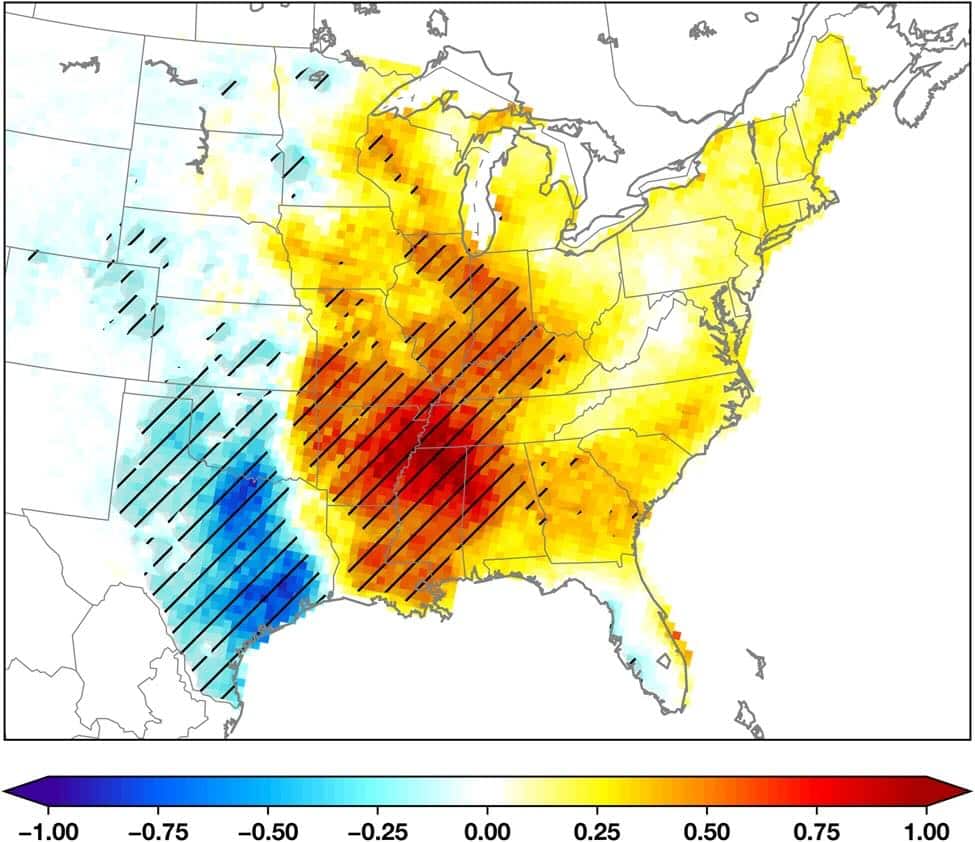
Northern Illinois University study on supercells – https://newsroom.niu.edu/how-supercell-storms-might-change-this-century/
Even under a good emissions reduction scenario, supercells increase in nearly the same area as the 2018 study.
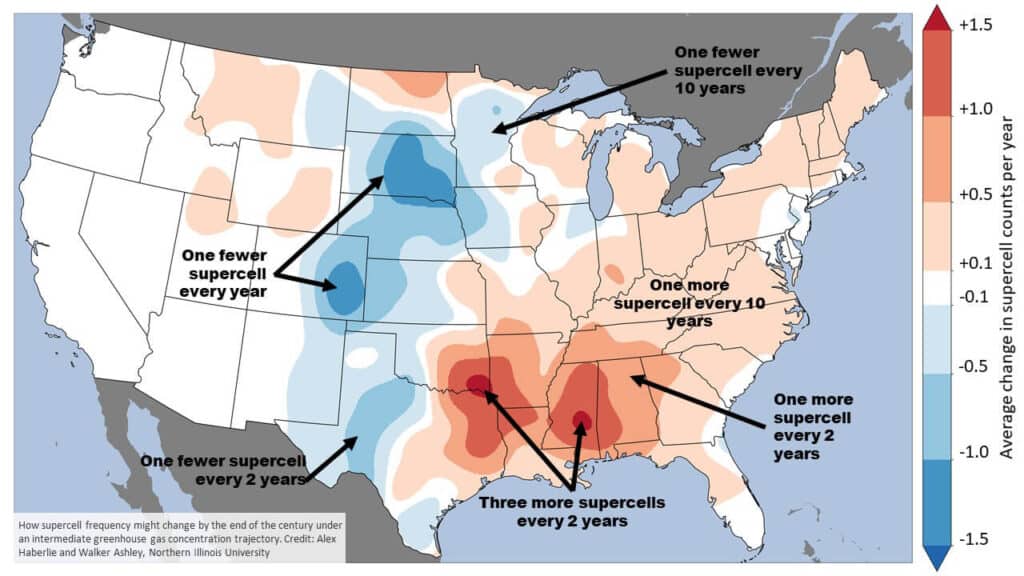
Another study pointing to the eastward shift – https://iopscience.iop.org/article/10.1088/2515-7620/ac50c1
US is experiencing more tornado outbreaks, despite fewer tornado days overall, researchers say – ABC (US), includes video
The increase in tornado counts could be a function of a more “weather-aware” society, but climate change could be playing a role. It’s complicated, and the answer isn’t quite clear – Tornadoes and Global Warming: Is There a Connection? – National Geographic
What we recommend: a weather radio. The Midland WR120 is perfect, and inexpensive too!
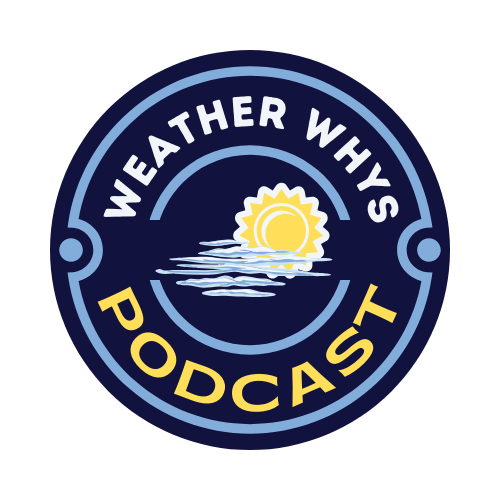
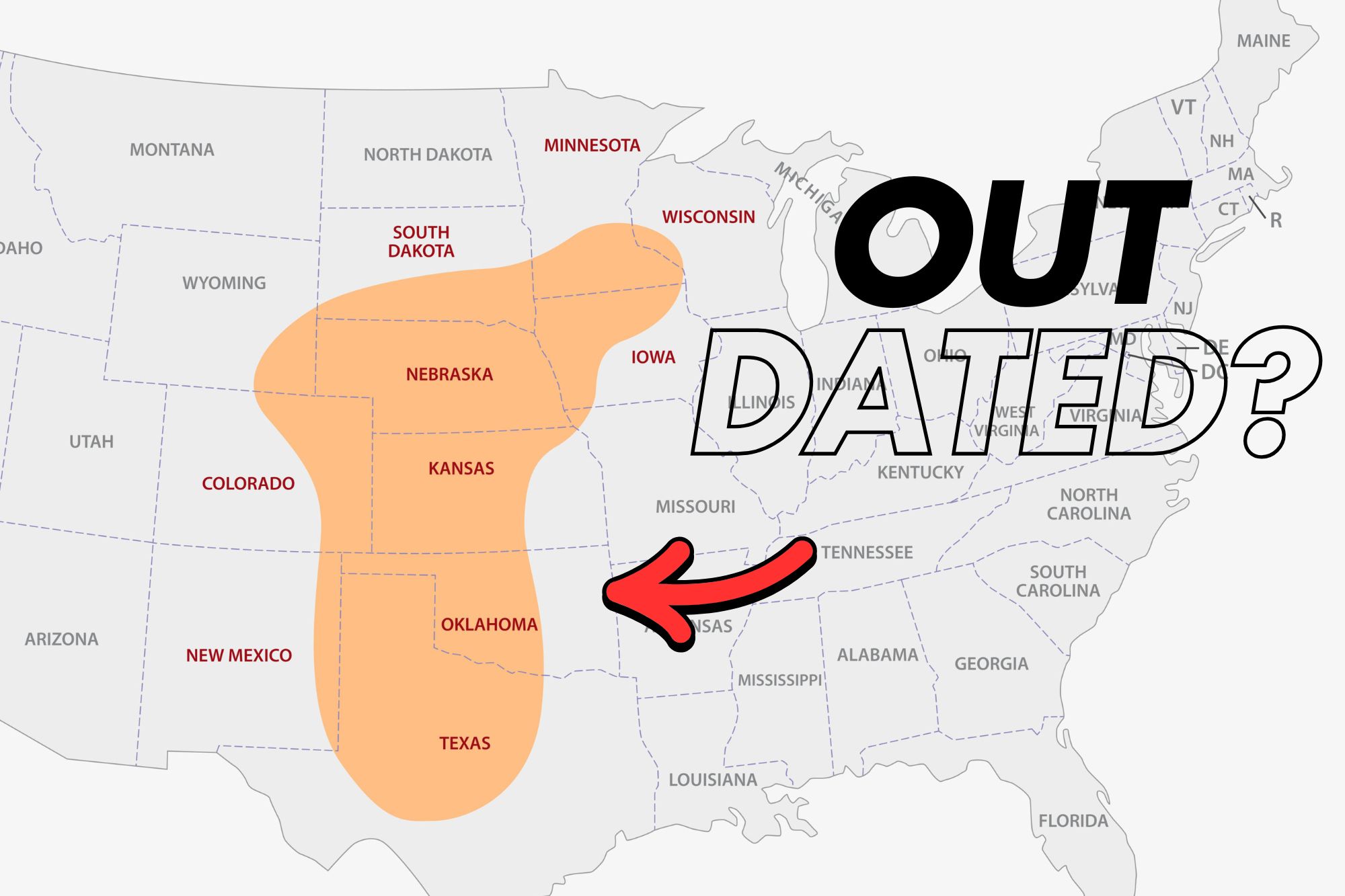
cool